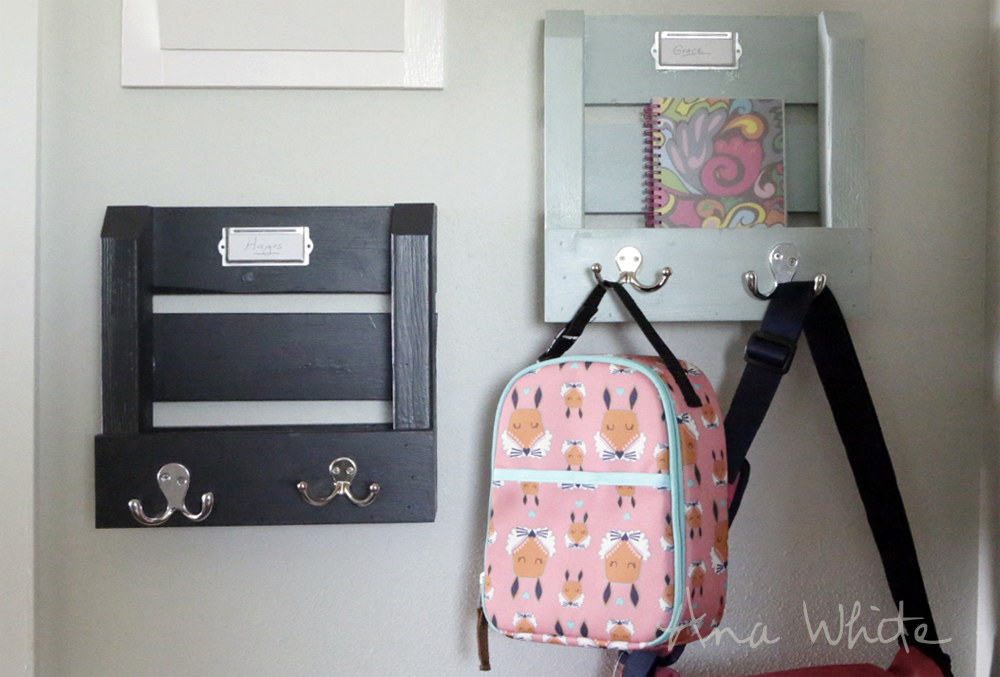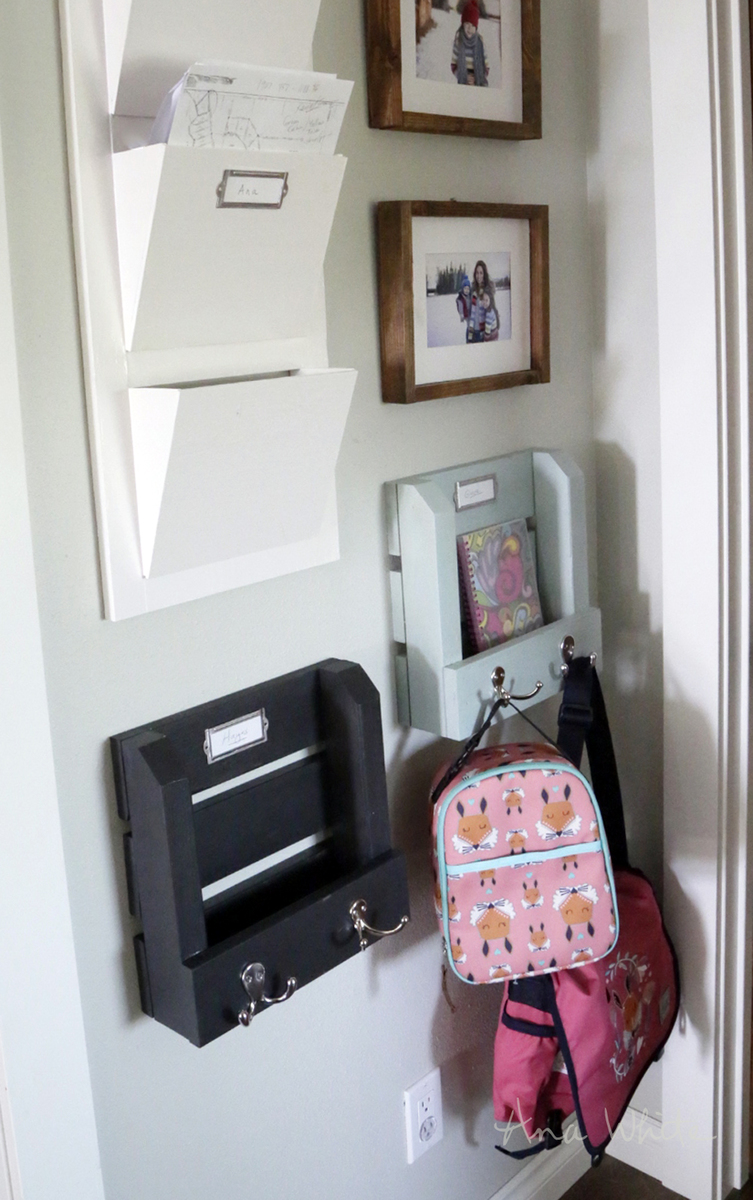
Perfect for back to school! Sized to hold folder or homework, hooks for backpack and lunchbox. DIY plans by Ana-White.com

Preparation
1 - 1x4 @ 6 feet long
1 - 2x4 @ 30" long
2 - 2x4 @ 14-3/4" (sides)*
4 - 1x4 @ 13" (front and back)
1 - 1x4 @ 10" (bottom)*
*can be subsituted for x3 or x6 width boards to change depth of shelf
Please read through the entire plan and all comments before beginning this project. It is also advisable to review the Getting Started Section. Take all necessary precautions to build safely and smartly. Work on a clean level surface, free of imperfections or debris. Always use straight boards. Check for square after each step. Always predrill holes before attaching with screws. Use glue with finish nails for a stronger hold. Wipe excess glue off bare wood for stained projects, as dried glue will not take stain. Be safe, have fun, and ask for help if you need it. Good luck!
Instructions
Step 1
I cut the top front corners off just to soften the edges. I did this with my mitersaw set at a 45 degree angle.
I choose to use 2x4s for the sides because there's a wide edge to nail into. You could also use a 1x board. Another suggestion is using a x3 or x6 board for the sides and bottom. I actually did the x3 option since this project is in a small hallway.
Step 2
It is always recommended to apply a test coat on a hidden area or scrap piece to ensure color evenness and adhesion. Use primer or wood conditioner as needed.













Comments
Lady Goats
Sat, 08/15/2015 - 10:03
I LOVE the pallet-esque look of these!
They're form and function <3 I like the 1x3/2x3 look of these, but could see the 2x4/1x4 being slightly more useful. Awesome job, as always!
Linda7
Wed, 08/19/2015 - 23:48
Cute cute cute!
Love this idea! Got to build!
greg20148
Thu, 09/03/2015 - 09:03
Hardware
Where did you get the metal label holders?
Thanks,
Greg